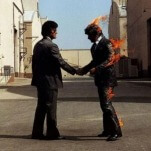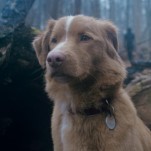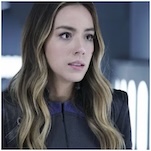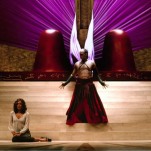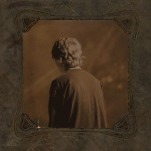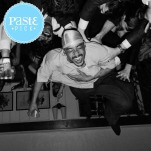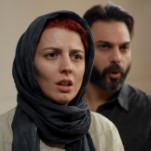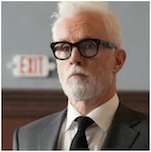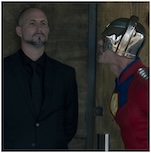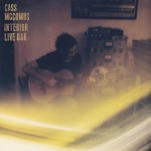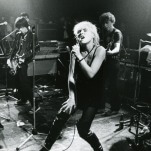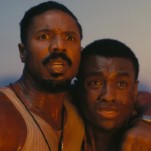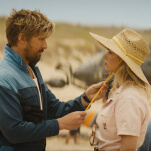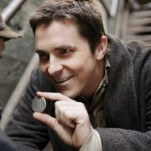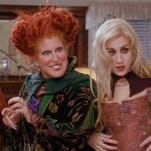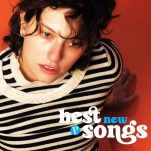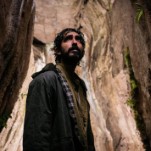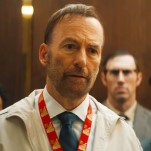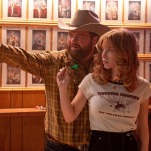Cartoon Crossroads Columbus: Jeff Smith & Tom Spurgeon Keep Comic Love Alive in the Midwest
Since 2006, New York Comic Con has occupied The Jacob K. Javits Convention Center, a massive structure of drywall and gray carpeting stretching 840,000 square feet. With only 30,000 fewer attendees, San Diego Comic-Con annually sends legions of fans and cosplayers through The San Diego Convention Center, a series of exhibition halls covering 615,700 square feet.
As the years and acquisitions have passed, these two staples of comic book adulation have gradually shifted their focus to movies, gaming and television. At first subtly, now almost exclusively. SDCC’s Hall H— the convention’s largest hangar that seats 6,100—didn’t feature one panel devoted to comic books this summer. Next week, NYCC will rent out the Hammerstein Ballroom and its 3,500 seats. Among exhibitions for multimedia heavyweights like Cartoon Network and Starz, only one event revolves around sequential art—a signing from manga superstar Masashi Kishimoto.
Cartoonist legend Jeff Smith and comic journalism vet Tom Spurgeon are neither interested in convention halls, movies, television or games. This week, the author behind Bone and RASL and the former editor-in-chief of The Comics Journal will “soft launch” Cartoon Crossroads Columbus, an ambitious festival that uses the 15th largest city in the nation as a home for three days of exclusive comic book celebration (and one animation presentation).
Self-described comics lifers with decades spent in the medium, Spurgeon and Smith have felt the field’s identity slip into something uncomfortably transient.
“[Walking Dead writer] Robert Kirkman is important to us because of the writing on his comic book, not because of the TV shows that result,” Spurgeon explains during coffee at Smith’s Columbus studio and publishing company, Cartoon Books. “We’re almost at the point where we’re treating comics as a weigh station before you make your money or impact. Comics are solely what we do and it’s solely where our efforts go. We want this to be important. We want to celebrate older cartoonists who may have fallen out favor. We want to celebrate the anniversaries of great comics. It’s solely comics-focused.”
Embracing the formula of decentralized man-o’-war events like South by Southwest and Cannes Film Festival, where different organizations host different events at different locales, Cartoon Crossroads Columbus is a community affair that holds special significance for the Buckeye State. Ohio makes a very strong argument as the nexus of American cartooning and comic books—even if most of the action is produced in New York City or Southern California, comics’ biggest dreamers were born in the heart of the Midwest.
Lancaster native Richard Outcault created the 19th-century cartoon character the Yellow Kid in his Hogan’s Alley strip, creators Jerry Siegel and Joe Shuster imagined Superman in a north Cleveland suburb and Little Nemo in Slumberland mastermind Winsor McCay even spent time in Cincinnati as a billboard illustrator and newspaper artist. Harvey Pekar immortalized Cleveland through his slice-of-life indie output. These pioneers don’t even account for other buckeye natives including Calvin and Hobbes legend Bill Watterson and comic book royalty like Brian Michael Bendis, Brian K. Vaughan, Brian Azzarello, Lee Bermejo, Chris Sprouse and (temporarily) Paul Pope. Yet one institution has done more to study and praise cartooning and comics than any creator: The Billy Ireland Cartoon Museum and Library.
Run by The Ohio State University, the “Billy” houses the largest payload of original comic strips and art in the world, with 300,000 original cartoons, 45,000 books, 67,000 and 2.5 million comic strip clippings and newspaper pages. The library has celebrated its collection—including Watterson’s Calvin and Hobbes run— with smaller tri-annual festivals. Then, a few a years ago, its leaders decided that the festivals would either have to change or stop.
“(The Billy) asked me if I had an idea for extending the festival,” Smith recalls. “I had noticed that Columbus had this unusual institutional support for the arts. The Columbus Art Museum was the first to show [Robert] Crumb’s original artwork for The Book of Genesis Illustrated in the United States. They showed all 300 pages in sequential order over five galleries. We have the Thurber House, which has a graphic novel in residence every year [Eleanor Davis will take residency for three weeks starting October 25].”
-

-

-

-

-

-

-

-

-

-

-

-

-

-

-

-

-

-

-

-

-

-

-

-

-

-

-

-

-

-

-

-

-

-

-

-

-

-

-

-




